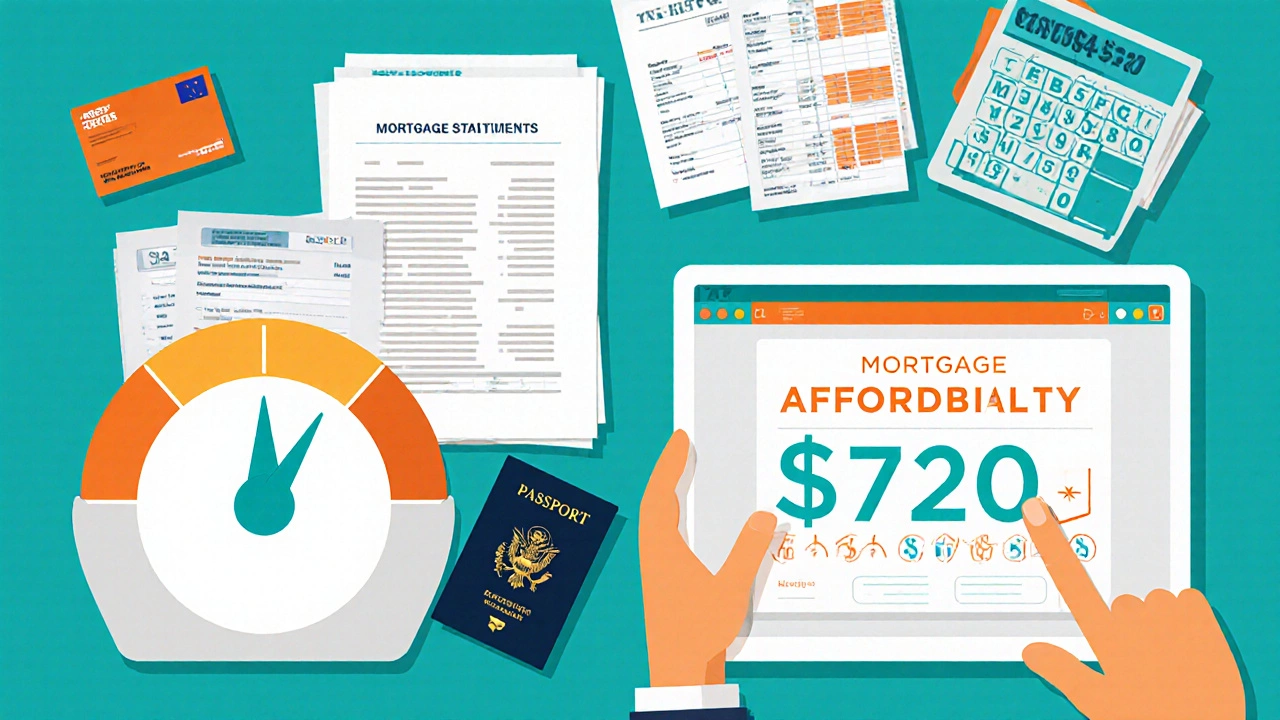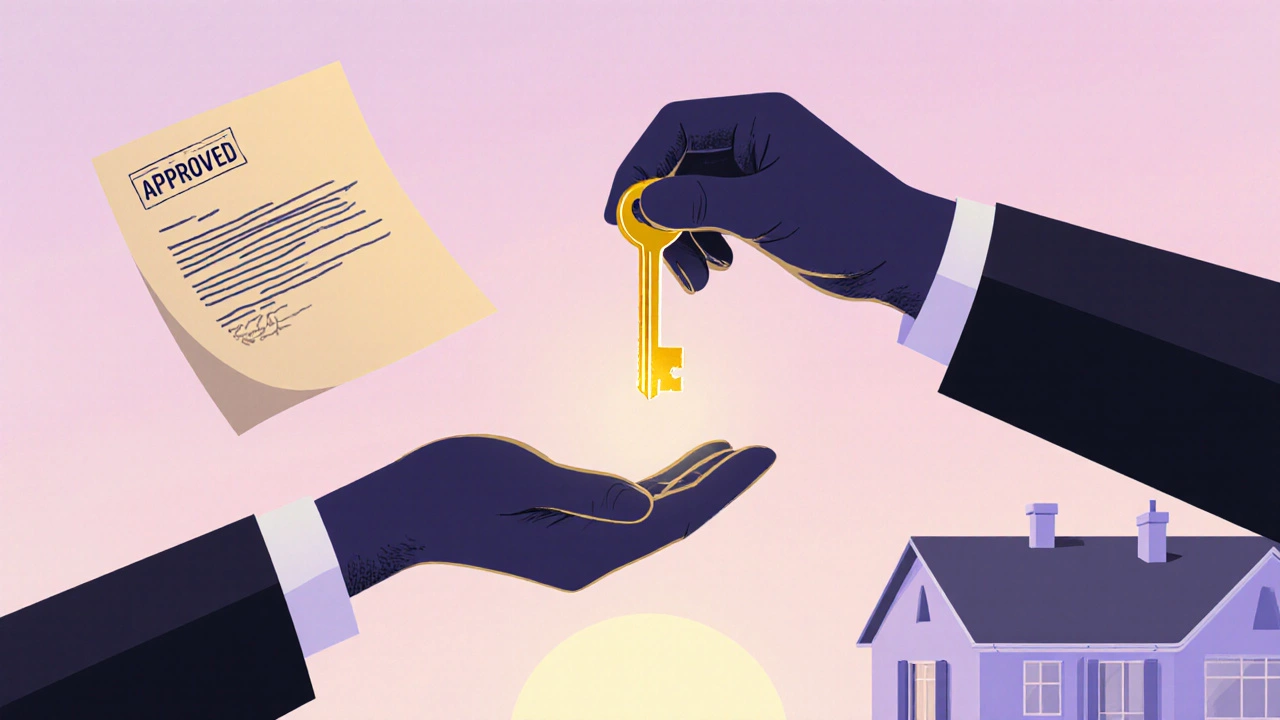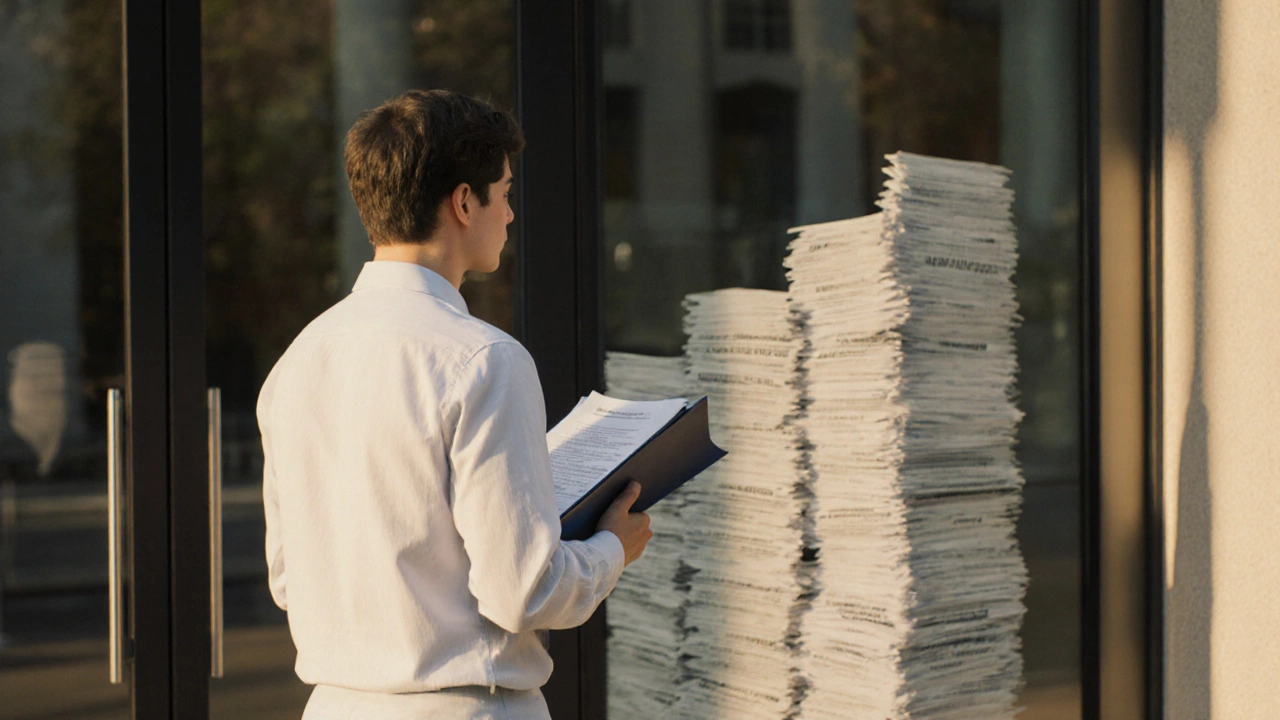Mortgage Affordability Calculator
Your Financial Information
Your Results
How to Qualify for $100,000
To qualify for a $100,000 mortgage, you typically need:
- Credit score ≥ 700 Pending
- Debt-to-income ratio ≤ 36% Pending
- Loan-to-value ratio ≤ 80% Pending
Grabbing a six‑figure mortgage can feel like scaling a wall, especially if it’s your first go‑round on the property ladder. The good news? With the right prep you can walk into a bank, ask for a loan, and walk out with a commitment to borrow 100k. This guide walks you through every step, from credit check to closing, so you know exactly what the bank expects and how to meet it.
What a Bank Loan Actually Means for a First‑Time Buyer
When a bank talks about a Bank loan is a secured loan that uses real‑estate as collateral, typically repaid over 15‑30 years with interest. For a newcomer, the loan is the financial engine that turns a modest deposit into a full‑price home. It’s not a credit card or personal loan - it’s a mortgage specifically structured for property purchases.
Step 1: Gauge Your Buying Power
Before you even look at listings, figure out how much the bank is likely to lend you. Two ratios drive the calculation:
- Loan‑to‑value ratio is the loan amount divided by the property’s appraised value. Most banks cap this at 80 % for first‑time buyers.
- Debt‑to‑income ratio measures monthly debt payments against gross income. A safe target is under 36 %.
Use an online affordability calculator, plug in your gross salary, existing debts, and the amount you can stash as a deposit. The result tells you the maximum loan the bank might approve.
Step 2: Check and Boost Your Credit Score
Your Credit score is the single factor lenders look at first. In New Zealand, scores above 700 are considered excellent, 600‑699 fair, and below 600 risky. Pull a free report from the major bureaus, correct any errors, and pay down revolving balances. If you have a few months of clean payment history, you’ll see a noticeable bump.
Step 3: Gather Core Documentation
Banks love paperwork - the more complete, the faster the approval. Here’s the essential list:
- Proof of identity (passport or driver’s licence)
- Income verification - recent payslips, tax returns, or a letter from your employer confirming salary.
- Bank statements for the past three months (showing regular income deposits)
- Evidence of your Deposit - savings account balance or gift letter if a family member is helping.
- Details of any existing debts (student loans, car finance, credit cards)
Having these ready means you won’t be sent back for “more info” after the first meeting.

Step 4: Decide on the Mortgage Type
There are three common structures in New Zealand:
- Fixed‑rate mortgage - interest stays the same for a set period (usually 2‑5 years), giving predictable repayments.
- Floating‑rate mortgage - interest follows the official cash rate, which can drop or rise.
- Interest‑only mortgage - you pay only interest for an initial term, useful if you expect a big cash‑inflow later.
Talk to a Mortgage broker who can map each product to your situation, negotiate better rates, and fast‑track the paperwork.
Step 5: Get a Property Appraisal Ready
The bank will order a Property appraisal to confirm the home’s market value. The appraisal report feeds directly into the loan‑to‑value calculation. If the appraisal comes in low, you may need to increase your deposit or negotiate a lower purchase price.
Step 6: Submit the Formal Loan Application
With your broker’s help, fill out the bank’s loan application form. Most banks now offer an online portal where you upload the documents from Step 3. Double‑check these fields:
- Requested loan amount (your target $100,000 plus any additional fees)
- Chosen mortgage type and term
- Accurate personal details to match your ID documents
After submission, the bank’s underwriting team runs a risk assessment. Expect a call within 5‑7 business days for any follow‑up questions.
Step 7: Review the Offer and Lock the Rate
If all goes well, you’ll receive a Loan Offer Letter. This document spells out:
- Approved loan amount (up to $100k)
- Interest rate and whether it’s fixed or floating
- Repayment schedule
- Any conditions (e.g., insurance requirements)
Ask your broker to lock the rate if you’re comfortable - it protects you from sudden market swings before settlement.

Step 8: Meet the Conditions and Close the Deal
Typical conditions include:
- Proof of homeowner’s insurance
- Confirmation of the final purchase price
- Signed mortgage contract
Once everything’s signed, the bank transfers the loan amount to the seller’s account, and you become the legal owner. Congratulations - you just borrowed $100k from a bank!
Quick Checklist Before You Walk In
| Item | Why It Matters | Status |
|---|---|---|
| Credit score ≥ 700 | Shows you’re low‑risk | ✔︎ |
| Deposit ≥ 20 % of purchase price | Meets LTV limits | ✘ |
| Income verification documents | Proves repayment ability | ✔︎ |
| Debt‑to‑income ≤ 36 % | Keeps you affordable | ✔︎ |
| Property appraisal ordered | Validates loan amount | Pending |
Common Pitfalls and How to Avoid Them
Skipping the credit check. A surprise low score can stall the process; pull your report early.
Under‑estimating hidden costs. Stamp duty, legal fees, and moving expenses can add 5‑10 % to the total outlay.
Ignoring rate lock deadlines. If the market moves up after you lock, you could lose the advantage.
Sticking to this roadmap keeps the bank’s timeline smooth and reduces the chance of a rejected application.
Next Steps After Approval
Now that the loan is secured, focus on the home‑buying side:
- Hire a solicitor to handle the contract review.
- Schedule a final walk‑through of the property.
- Arrange moving services and set up utilities.
Each of these tasks runs parallel to the loan settlement, so coordinate with your solicitor to hit the settlement date.
Can I borrow exactly $100,000 if the house costs more?
Yes, but the bank will only fund up to a set percentage of the purchase price. If the home is $150,000 and you have a 20 % deposit, the bank could still approve a $100k loan as long as the loan‑to‑value ratio stays within limits.
Do I need a mortgage broker if I’m only borrowing $100k?
A broker isn’t mandatory, but they can often negotiate a better rate and streamline the document collection, which saves time and sometimes money.
How long does the whole process take?
From first credit check to settlement, expect 4‑6 weeks if your paperwork is complete and the appraisal comes back on time.
What interest rate should I target for a $100k loan?
Rates fluctuate, but a competitive fixed‑rate for a 30‑year term sits around 5‑6 % in 2025. Compare at least three lenders before deciding.
Will the bank require insurance before releasing funds?
Yes. Most lenders ask for homeowner’s insurance and sometimes mortgage protection insurance as a condition of settlement.
